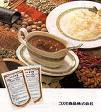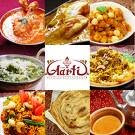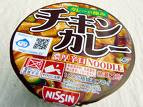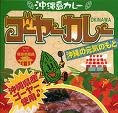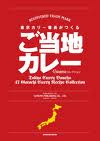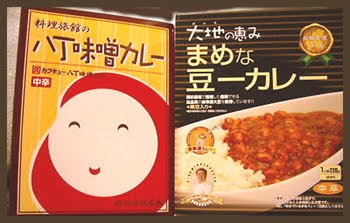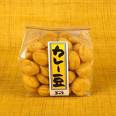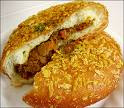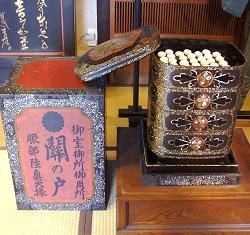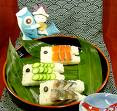::::::::::::::::::::::::::::::::::::::::::::::::::::::::::::::::::::::::::::::::::::::::::::::::::::
Kagawa 香川 / Takamatsu
Kotohira, Konpira
Shodoshima (shoodoshima 小豆島)
:::::::::::::::::::::::::::::::::::::::::::::::::::::::::::::::::::::::::::::::::::::::::::::::::::
Since 2012, Kagawa is "renaming" itself into
Udon ken うどん県 ”Udon noodles prefecture"

The new mascot has noodles in its brain . . .

うどん県のマスコット

CLICK for more udon no business ideas !
うどん脳 Udon No Brain
quote
Udon no debuted Monday as the mascot of Kagawa, which has been billing itself as "Udon Prefecture" since last fall. The noodle-brained mascot will be used to help promote Kagawa as the kingdom of the wheat-flour noodle.
"I am the same (as the character) in that the only thing in my brain is udon,"
said Shigeki Omine, chairman of the association.
source : english.kyodonews.jp
::::::::::::::::::::::::::::::::::::::::::::::::::::::::::::::::::::::::::::::::::::::::::::::::::::
Oiri, yomeiri おいり 嫁入り sweets for the bride Marugame, Sanuki
::::::::::::::::::::::::::::::::::::::::::::::::::::::::::::::::::::::::::::::::::::::::::::::::::::
Shoodoshima 小豆島
オリーブ Olives from Shodoshima 小豆島
shoodoshima, shoodojima
Olives Chocolate, Olive chocolate ! オリーブチョコレート
. . . . . also
olive tempura オリーブ天ぷら deep fried olives on a stick each
オリーブの実のかき揚げ oriibu no mi no kakiage
olive cider オリーブサイダー from the juice left over after pressing.
. . . CLICK here for Photos !

オリーブを守る会 Group to protect the Olives
::::::::::::::::::::::::::::::::::::::::::::
shima soomen, 島そうめん soomen noodles expanded by hand
from Shodoshima 小豆島
somen from Shoodoshima
小豆島では、虫送りや法事の手伝い、気のおけない同士の集まりや内々で食べるそうめんは「千本ばし」で食べます。にゅう鉢(ばち)と呼ぶ大きい鉢(はち)や上だらいに夏は井戸水、冬には湯を張って浮かし、四方八方から、食べ手の箸(はし)が伸びるところから『千本ばし』といわれます。互いにはさんだ麺(めん)がつながっていたりすることもあり、たらいうどんの元祖といったところです。
小豆島のそうめん作りは、400年ほど前、農作業の暇になる冬の副業として始まりました。原料の小麦や塩、麺(めん)に塗るごま油も島内産でした。
うどんの原料と同じ小麦粉で細いそうめんに仕上げるには、細く延ばしても切れないだけの十分なデ(粘り)を出すために早朝から2日間にわたる多くの製造工程を経て作られるのです。
ちなみに「長さ19cm、重さ50g、その数320~350本」、これが小豆島手延べそうめん1束の規格です。
source : www.pref.kagawa.jp with recipe
. . . CLICK here for Photos !
kankoro かんころ 甘古呂 flower from sweet potatoes
kankoro dango かんころ団子 balls of sweet potato flower
kankoro soba かんころそば noodles with sweet potato flour and wheat flour
kabocha taikai カボチャ大会 the biggest pumpkin show
Giant Pumpkin Show
The Winner was 530 kg in 2008.
カボチャの大きさを競う「第22回日本一どでカボチャ大会」が28日、香川県小豆島町で開かれ、富山県の農業、長谷一司さん(61)が優勝した。
. . . CLICK here for Photos !
„Fest der großen Kürbise“ Insel Shodoshima
肥田乳業 小豆島町草壁本町
yoghurt-like drinks in many flavors,
coffee, milk, low fat and rakubisu
特濃ミルク、肥田コーヒー、低脂肪乳、ラクビスの4種類
tsukudani, 貝と蕗の佃煮 sweetly simmered seafood and seaweed
still made by hand in many family enterprizes.
List of enterprizes in Shoodoshima with
Sake 1, soy sauce 17, tsukudani 15, Soomen 63, olives 2,
source : www.olive.or.jp / food
..........................................................................
ishikirizushi ishikiri sushi 石切ずし "stone cutters sushi"
stone masons sushi
From Shodoshima. The stones of this island were cut and transported to Osaka for the construction of Osaka Castle. Now this famous sushi is prepared for festivals or memorial services.
. . . CLICK here for Photos !
石工の鑿冷したる清水かな
sekkoo no nomi hiyashitaru shimizu kana
fresh spring water
cools the chisel
of the stone mason . . .
Written in 1768
. Yosa Buson 与謝蕪村 in Edo .
..........................................................................
warigo bentoo わりご弁当 lunchbox for the kabuki performance
every family has its own box, like the ROKUBEN.
::::::::::::::::::::::::::::::::::::::::::
anago no nama sushi 穴子の生寿司 sushi with life anago fish
gakimeshi, kawameshi 餓鬼めし(川めし) rice cooked by the riverside
for the O-Bon festival
igizudoofu いぎす豆腐 toofu with igizu seaweed
igizu いぎす/ 海髪. kind of nori
it looks rather yellow.
. . . CLICK here for Photos !
Tofu mit Igizu-Seegras
kakimaze, omaze かきまぜ(おまぜ) rice mixed with ingredients
kintoki mame 金時豆 red kintoki beans
Phaseolus vulgaris
They grow in many parts of the prefecture since the Edo period.
Used for tempura 金時豆の天ぷら. kintokimame tenpura and
mamepan 豆パン buns with red beans
kintokimame, nimame 煮豆 "beans to be boiled"
. . . CLICK here for Photos !
They are often prepared with sugar coating for amanatto 甘納豆 sweet natto.
naracha meshi 奈良茶飯 Ricegruel
from the Toodai-ji Temple of Nara, here for more than 400 years.
source : www.pref.kagawa.jp
::::::::::::::::::::::::::::::::::::::::::::::::::::::::::::::::::::::::::::::::::::::::::::::::::::
Shimahide Senbei 志ま秀せんべい えびせん
志満秀 Shimahide
志満秀えびせんべい
Shimahide shrimp cracker
with the landscape of Ritsurin Park made by ebi and nori.
. . . CLICK here for Photos !
. . . CLICK here for 志満秀 Photos !
wasanbon ebisen
source : www.shimahide.com/ Details about the making.
::::::::::::::::::::::::::::::::::::::::::::::::::::::::::::::::::::::::::::::::::::::::::::::::::::
shooyumame 醤油豆 しょうゆ豆 shoyu mame, broad beans simmered in soy sauce
しょい豆 shoimame. Fava beans. soramame . Saubohnen
An old grandmother wanted to give some food to the pilgrims as osettai. She roasted some broad beans in an earthen pot (hooroku). Some fell off and into a pot where she had kept a bit of soy sauce. She picked these beans out after a while and ... whow, they tasted really good and soft! Thus these beans were born.
My Japanese Text for these beans
ohaguro, o-haguro おはぐろ (御歯黒 / お歯黒 blackening teeth with braod beans extract
:::::::::::::::::::::::::::::::::::::::::::::::::::::::::::::::::::::::::::::::::::::::::::::::::::::
gaarikku musume ガーリック娘 "Garlic daughter" oil with garlic taste
ninniku oiru ニンニクオイル
from Kotohira 琴平, where the second most garlic of Japan is produced
:::::::::::::::::::::::::::::::::::::::::::::::::::::::::::::::::::::::::::::::::::::::::::::::::::::
Sanuki no Shokubunka 讃岐の食文化
讃岐うどん Sanuki udon noodles
Sanuki Udon, my photos
. Sanuki Udon Poster in English .
Sanuki Udon Henro 讃岐うどん遍路 Pilgrimage for Udon noodles
List of restaurants with the best udon noodles
. . . CLICK here for Photos !
Named after the famous Shikoku pilgrimage, Henro.
kenmenshiki 献麺式 offering Sanuki udon to the gods
. . . CLICK here for Photos !
On June the second, the day of udon, many udon-makers bring their special sanuki udon to the shrine Nakano Tenmangu 中野天満宮 / 滝宮天満宮 in Takamatsu.
They also hold the Sanuki Udon Festival さぬきうどん祭り.
The 2nd of July is the
Day of Udon うどんの日 udon no hi
- quote -
Sanuki Udon Karuta 讃岐うどんカルタ playing cards
Noodle playing cards withdrawn over political correctness concern
. . . the prefecture, which has been promoting itself as “Udon Prefecture” since 2011, had something of a damper Tuesday when it announced a halt to sales of a new product to popularize the noodles in the rest of the country. One of its “Udon Karuta” playing cards for the New Year was feared to be politically incorrect.
The playing cards,
each bearing a poem on the theme of udon, were released by the prefectural government on Saturday after soliciting submissions of such poems from across Japan.

強いコシ 色白太目 まるで妻
“Strong koshi, fair-skinned, chubby, just like my wife,”
is a poem in traditional haiku mode intended to celebrate Kagawa’s famous Sanuki udon noodles. Koshi is a Japanese word for the “crunchiness” of noodles but as it can also be taken as referring to a person’s “hips” the poem was deemed potentially offensive to women.
..... The government of Kagawa had prepared 2,000 sets of the cards for sale.
- source : japantoday.com December 2015 -
- - - - - External LINKS
うずまきもち uzumakimochi
ひっかりずし hikkarizushi sushi
五合ずし
イギス豆腐 igisu toofu
豆茶飯 mame chahan
あなごの生 anago no nama
もちばな mochibana
里芋入り八朔ずし
八杯
えびみそ汁 ebimisojiru
もっそう飯 mossoo gohan
さわさわsawasawa
あさり雑炊 asari zoosui
なすびごはんnasubi gohan
トコロテンtokoroten
......................................... local food products
麦味そ mugimiso miso
オリーブ oriibu, olives
蕗
つわぶき tsuwabuki
イタドリ itatori
ヤーコン yaagon
こんにゃく konnnyaku
里芋 satoimo
山芋 yamaimo
よもぎ yomogi
うばuba, budoo mame ぶどう豆、ぶど豆
uba dango
かんぴょうkanpyoo
Seisan chihoo of Kagawa, 西讃 Western Sanuki
Sanuki udon are served for the ceremony when a new home is finished. It is customary that the people of the new home and the visitors sit in the new bath (ofuro) and eat the noodles there in the water. Yes.
And also if someone makes a renewal of his bathroom only, this eating in the water takes place.
futoku, nagaku ... for the new situation, may it be long and good.
also when moving to a new home, hikkoshi udon 引越しうどん
are eaten in the full bathtub.

新築の時に風呂場でうどん
katokichi 加ト吉 changed the name to
table mark テーブルマーク Table Mark.
specializing in frozen food, located in Kagawa.
:::::::::::::::::::::::::::::::::::::::::::::::::::::::::::::::::::::::::::::::::::::::::::::::::::::
aji no sanbai 魚(あじ)の三杯 horse mackerel with sanbai vinegar
prepared for the summer festival to entertain visitors. The bones are soft and can be eaten too.
aosazoosui あおさ雑炊 rice gruel with aosa sea lettuce
dashi, carrots, shiitake mushrooms, mirin, soy sauce and mochi make this dish.
chishamomi ちしゃもみ chisha lettuce dish
prepared for spring festivals.
萵苣 chisha.
with iriko and chirimenjako, flavored with vinegar miso.
. . . CLICK here for Photos !
dojoojiru どじょう汁 soup with loach
After the field work is done, the dojoo are fat and ready to eat. Prepared with thick udon noodles and vegetables. Best eaten with all together.
. . . CLICK here for Photos !
fushimen ふしめん soomen noodles from Shodoshima
Best made in the cold months of November till March. Prepared with a simple broth.
. . . CLICK here for Photos !
honetsukidori 骨付鳥(ほねつきどり) fried chicken with the bones
From Marugame town 丸亀市
. . . CLICK here for Photos !
hyakka 万葉(ひゃっか)"onethousand leaves"
This is a special green leaf vegetable of Kagawa prefecture,the naming is of Western Sanuki. It is quite bitter and needs to be soaked in water over night to get rid of the bitterness (akunuku). It can then be prepared like hakusai or komatsuna leaves.
In Takamatsu, it is called "manba". takana, oona 高菜(大からし菜)
ひゃっかのドレッシングあえ hyakka no doresshingu ae RP
kigo for summer
. Takana 高菜 mustard greens .
imotako いもたこ octopus and satoimo potatoes
also with dengaku miso or nigorogashi. The octopus is fresh from the Inland Sea. This dish combines the bounty of the mountains and of the sea.
irikomeshi, iriko meshi いりこ飯 rice with little sardines
from katakuchi iwashi (anchovis). The fish are boiled for a moment, then dried and later added when the rice is cooked or mixed to the finished cooked rice .
kankanzushi kankan sushi (hottarazushi) カンカンずし(ほったらずし)
Prepared in large amounts to last for a few days, with a lot of salted fish. It is pressed into its form with a heavy hammer, hence the name imitating the sound "kan kan". Prepared from old family recipes.
kuromame no gomokuni 黒豆の五目煮 mixed ingredients and black beans
Especially eaten for the New Year, with the wish to work diligently (mame).
manba no kenchan まんばのけんちゃん fried leafy vegetables
manba is a kind of takana leafy vegetable. It is fried, abura-age and dashi are added. kenchan derived from kenchin けんちん【巻繊】 , the edges and fringes of leafy vegetables.
. . . CLICK here for Photos !
. managatsuo マナガツオ 真名鰹, (まながつお) pomfret
off the shore of Sanuki
nimono no tenpura 煮物てんぷら "
Tempura from boiled vegetables"
Leftovers from boiled vegetables are put into a coating and deep-fried again for another delicious meal up to three days after the first boiling.
oshinukizushi oshinuki sushi 押し抜きずし
from fava beans and sawara. In some areas, the new bride of the home would prepare some with the flavor of her mother-in-law, take it home to her own family and show off with her new recipe.
rakkasei no amani 落花生の甘煮 sweet simmered peanuts
From the islands 女木島、男木島 near Takamatsu, where peanuts are planted. Prepared in autumn. Peanuts simmered in saltwater, added to the black beans for the New Year food. The soft skin is kept on the peanuts for extra nutrition. The final flavor comes with salt and sugar.
satsuma さつま Black mullet dishes
Prepared in Western Sanuki. Black mullet is boiled, grated finely and poored over rice with wheat. Sometimes miso or dashi is used for flavor.
shippoku soba しっぽくそば buckwheat noodles with vegetables
Even in a "noodle country" like Sanuki, in the cold winter buckwheat noodles are eaten, because it warms the body. Fish dashi, radish, carrots, satoimo potatoes, aburaage tofu and other things are boiled together for a good broth.
shippoku udon うどん(しっぽく) udon noodles with vegetables
Prepared in the winter months. Vegetables of the season are boiled and thrown over the udon noodles. Some homes eat it instead of the "toshikoshi soba" on December 31 to pass over to the new year.
sofuto toofu ソフト豆腐 "soft tofu"
made from kinugoshi, with a bit less water.
sugatazushi sugata sushi 姿ずし "sushi keeping the form"
Prepared in Shodoshima island from summer to autumn. Freshly fished Horse mackerel is used.
suiki no nutaae ずいきのぬたあえ
satoimo potato stems with vinegared miso paste
The stem of satoimo potatoes is called suiki. It is soft and not too bitter.
Served for the autumn festival to thank for the harvest.
taimeshi たい飯 seabream with rice
Prepared for the workers when they came back home after a working ship trip to Osaka.
takuan no kinpira たくあんのキンピラ Kinpira from takuan radish
Takuan pickled radish is washed and dried, then fried in the pan with oil, soy sauce, mirin, chili peppers and so on.
teppai てっぱい crucian carp dish
prepared from autumn to winter, after the busy farmers season.
The fields are drained of water and the remaining fish are eaten. With white miso, sugar and a bit of vinegar and salt. Sometimes radish. Nowadays saba fish is used too.
. . . CLICK here for Photos !
uchikomijiru 打ち込み汁 "soup with anything thrown in"
A common dish of the farmers. With seasonal vegetables and miso flavor. Noodles are added
wakegiae, wakegi ae わけぎあえ wakegi leek with dressing
Best prepared in spring for the Doll Festival. Boiled with shells and asari shells, white miso, karashi mustard, sugar and vinegar.
wasanbon 和三盆 Japanese sugar from Kagawa and Tokushima, Shikoku
:::::::::::::::::::::::::::::::::::::::::::::::::::::::::::::::::::::::::::::::::::::::::::::::::::::
Meine Photos
173 Starbucks mit Musikorgel
176 izakaya akachoochin Takamatsu
207 dango in Ritsurin park
... and more Photos from Takamatsu
*****************************
Worldwide use
Shoodoshima, eine kulinarische Insel
„Unsere Gegend ist sehr steil und wir haben nur wenig Platz zwischen dem Meer und dem Bergwald. Da wächst kein Reis. Wir machen fast alles mit Süßkartoffeln.“ Frau Murakami Kazue von der Halbinsel Mito schiebt ihren Schubkarren auf einem schmalen Pfad entlang dem Haus nach oben auf eines der kleinen Terrassenfelder, wo ihre Süßkartoffeln wachsen. Oben angekommen hockt sie sich erst mal erschöpft auf die Steinmauer, sie ist nämlich schon weit über 80 Jahre. „Ich habe das Leben und Kochen hier von meiner Schwiegermutter gelernt, aber meine Söhne sind in die Stadt abgewandert und ich hab keine Schwiegertochter mehr, der ich den Geschmack unserer Familie weitergeben kann. Ich bin hier die letzte der Familie“, klagt sie wie viele alte Bauern im ländlichen Japan.
Dann beschreibt sie ihre Lieblingsgerichte mit den Süßkartoffeln.
Süßkartoffeln
Für „Kankoro-Mehl“ werden die Süßkartoffeln in Scheiben von einem Zentimeter Dicke geschnitten und an der Sonne getrocknet, dabei hilft im Winter der kalte Wind vom Meer und die Scheiben rollen dabei hin und her mit dem Geräusch koron koron ... daher der Name. Die getrockneten Scheiben werden im Steinmörser zerrieben und das Mehl für verschiedene Speisen verwendet. Weil auch die Schalen mitgetrocknet werden, bekommt das Mehl eine etwas braune Farbe.
Für die „Kankoro-Nudeln“ wird 70% Mehl von den Süßkartoffeln mit 30% Weizenmehl vermischt und daraus Nudeln geknetet. Die Dashi wird aus kleinen Sardinen gekocht. Die von Hand geschnittenen dicken Nudeln werden für eine einfache Mahlzeit in eine Schale gelegt, mit der Dashi übergossen und mit etwas geriebenem Ingwer und klein geschnittenen Frühlingszwiebeln gewürzt.
Aus dem Kankoro-Mehl werden auch kleine Bällchen (kankoro dango) geformt, die oft noch den Abdruck von Mutters Fingern haben und als kleiner Imbiss am Nachmittag beliebt sind.
Die Ranken der Süßkartoffeln liefern ein süßgesimmertes Gemüse (tsukudani) für die Inselbewohner. Sie werden mit Sojasauce und Kombu eingekocht.
Eingekochtes auf Tsukudani-Art
Tsukudani dieser Art mit verschiedenen anderen Zutaten ist seit 1945 eine Spezialität von Shoodoshima und es gibt einige Hersteller mit eigenen Rezepten, die noch von Hand einkochen. Ausgesuchtes Kombu von Hokkaido und Seegras von der Inlandsee werden mit der einheimischen Sojasauce eingekocht. Dabei müssen sie die Zutaten in den großen Töpfen mehr als zwei Stunden mit einem besonders langen Spatel umrühren. Die Inselbewohner essen ihr Tsukudani nicht nur auf Reis, sonder auch auf Toast, ganz moderne sogar auf einer Lage mit Käse oder Mayonnaise.
Sojasauce
Die Sojasauce von Shoodoshima hat eine Geschichte von mehr als 400 Jahren; sie wird auch heute noch in Familienbetrieben überwiegend von Hand in großen hölzernen Fässern zubereitet. Die Hersteller entwickeln neben den traditionellen Sorten immer wieder neue Geschmacksrichtungen, um sich an die Wünsche ihrer modernen Kunden anzupassen. Selbst Pudding mit dem Geschmack von Sojasauce wird angeboten und von den Kindern mit großem Vergnügen verspeist.
Soomen-Nudeln
Die Herstellung von langen dünnen von Hand ausgezogenen Weizennudeln (tenobe soomen) begann bereits im 16. Jahrhundert und hat bis heute nichts an ihrem traditionellen Geschmack verloren; sie werden hier einfach „Nudeln der Insel“ (shima soomen) genannt. Im Winter haben die Bauern Zeit genug, um die Nudeln sorgfältig mehr als zwei Tage lang von Hand auf lange Stäbe zu reihen und langsam zu strecken. Ein Bündel Shoodoshima-Soomen wiegt nach altem Brauch etwa 50 Gramm und enthält 320 bis 350 Nudeln von 19 Zentimeter Länge.
Gegessen werden sie hier noch nach der Tradition aus einem großen Holzbottich, im Sommer im kalten Wasser schwimmend, im Winter in heißer Brühe. Alle kommen zusammen und stecken ihre „tausend Essstäbchen“ (senbonbashi) in den Bottich, streiten sich lachend um gleichzeitig gemeinsam ergriffene Nudeln und stärken so die Bande der Gemeinschaft im Dorf.
Oliven
Shoodoshima wird auch die „Insel der Oliven“ genannt. Die ersten Olivenbäume kamen 1908 aus Amerika und der Anbau im Dorf Nishimura begann bald in großem Rahmen, da sich das milde Klima und die relative Trockenheit dieser Gegend für die Pflanzen als günstig erwies.
Olivenöl für kosmetische Produkte und für die Küche als Tempura-Öl gibt es in einigen Variationen, aber darüberhinaus haben die Inselbewohner auch ihre eigenen Produkte entwickelt.
Schokolade mit Olivengeschmack und Oliven-Brauselimonade (oriibu saidaa) sind begehrte Reisemitbringsel, während die Oliven-Eiscreme am besten frisch auf der Insel schmeckt.
Kürbise
Jedes Jahr im Herbst findet das „Fest der großen Kürbise“ (kabocha taikai) statt, bei dem der schwerste Kürbis einen Preis bekommt. Alle Bauern aus der Umgebung und aus vielen anderen Teilen Japans reisen mit ihren dicken Kürbisen an, tauschen Hinweise zum Anbau aus und wiegen die dicksten. Im Jahre 2008 gewann Hase Kazushi aus der Präfektur Toyama mit einem 530 Kilogramm schweren Prachtstück. Diese „Monster-Kürbise“ (o-bake kabocha おばけかぼちゃ) werden im allgemeinen nicht gegessen.
*****************************
Related words
***** WASHOKU : Regional Japanese Dishes
***** . Folk Toys from Kagawa .
:::::::::::::::::::::::::::::::::::::::::::::::::::::::::::::::::::::::::::::::::::::::::::::::::::::::::::::::::::::::::::
[ . BACK to DARUMA MUSEUM TOP . ]
[ . BACK to WORLDKIGO . TOP . ]
- #sanukiudon #udon -
:::::::::::::::::::::::::::::::::::::::::::::::::::::::::::::::::::::::::::::::::::::::::::::::::::::::::::::::::::::::::::
